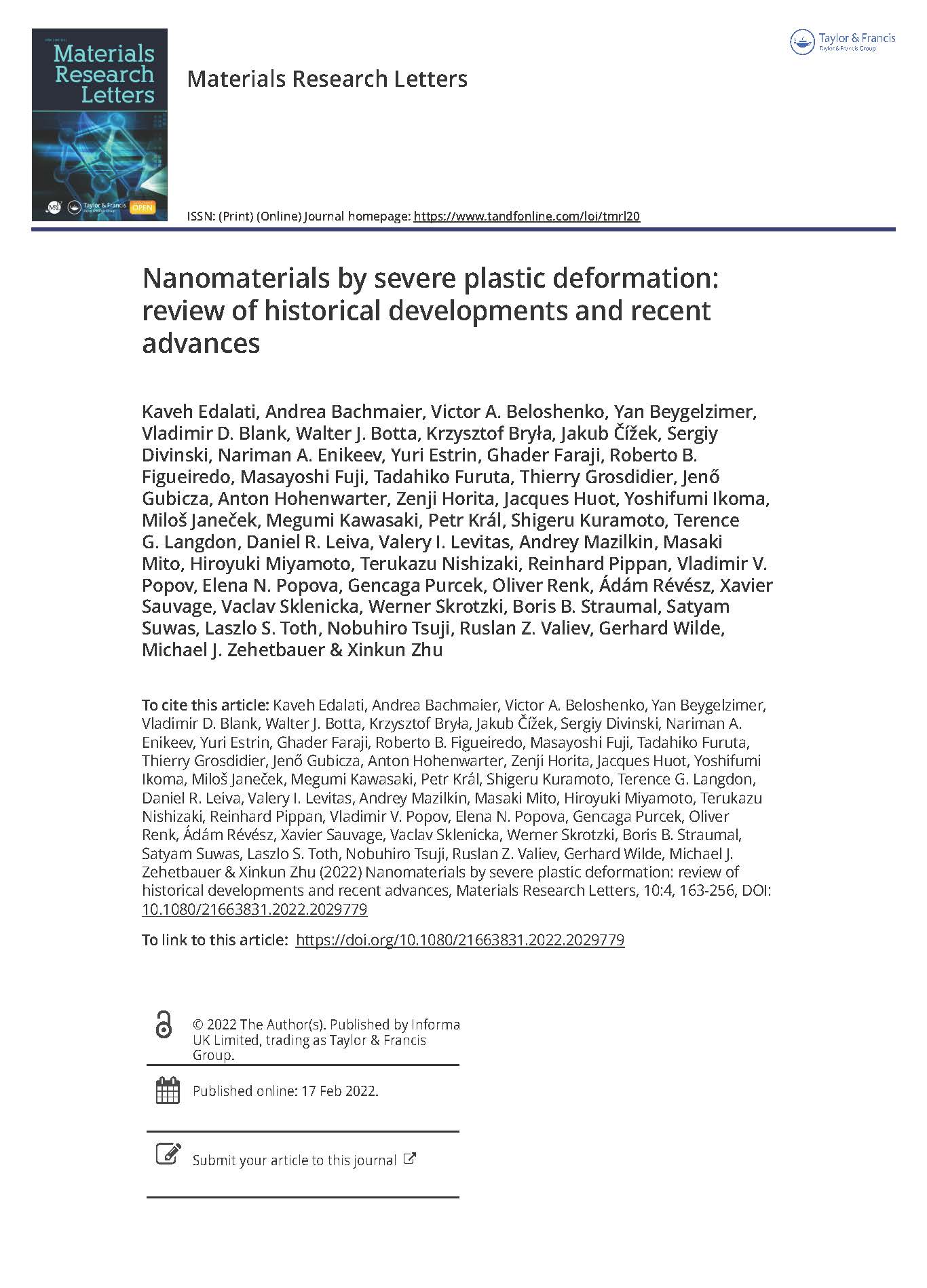Nanomaterials by severe plastic deformation: review of historical developments and recent advances
Materials Research Letters, 10 (2022), pp. 163-256. <Review Paper> DOI: 10.1080/21663831.2022.2029779研究論文概要
Severe plastic deformation (SPD) is effective in producing bulk ultrafine-grained and nanostructured materials with large densities of lattice defects. This field, also known as NanoSPD, experienced a significant progress within the past two decades. Beside classic SPD methods such as high-pressure torsion, equal-channel angular pressing, accumulative roll-bonding, twist extrusion, and multi-directional forging, various continuous techniques were introduced to produce upscaled samples. Moreover, numerous alloys, glasses, semiconductors, ceramics, polymers, and their composites were processed. The SPD methods were used to synthesize new materials or to stabilize metastable phases with advanced mechanical and functional properties. High strength combined with high ductility, low/room-temperature superplasticity, creep resistance, hydrogen storage, photocatalytic hydrogen production, photocatalytic CO2 conversion, superconductivity, thermoelectric performance, radiation resistance, corrosion resistance, and biocompatibility are some highlighted properties of SPD-processed materials. This article reviews recent advances in the NanoSPD field and provides a brief history regarding its progress from the ancient times to modernity.
